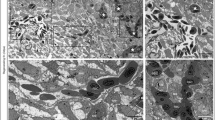Summary
This study was undertaken to reveal the neovascularization at early stages of splenic autografts three-dimensionally, to illustrate the differences between it and tumor angiogenesis, and to establish its origin. Early vascular formation after transplantation of the rat spleen or Waker tumor into the major omentum was examined by using a video macroscope, vascular casting methods and the organ culture technique. A complex vascular network layer (vascular cortex) was first formed beneath the capsule of an autograft; later, vascular buds grew from this network toward the necrotic center. They anastomosed and changed into a form resembling with-ered twigs (vascular medulla). Tumor angiogenesis did not present such morphological features and was characterized by capillary loop formation with a columnar vertex resembling an “inverted V”. This fundamental structure did not change throughout angiogenesis except for dilation and irregularity of vascular diameter. The organ culture technique demonstrated that the preliminary vasculature was formed in splenic autografts by regeneration of preexisting vessels in the graft and not by invading capillaries. Transmission electron microscopy showed that the cells present had characteristics of sinus endothelial cells. These results suggest that preexisting sinus endothelial cells rearrange themselves after devascularization and reconstruct a new vasculature that an-astomoses with the penetrating capillaries. This mechanism establishes vascular circulation at an early stage, and accelerates regeneration of the splenic autograft before complete necrosis.
Similar content being viewed by others
References
Calder RM (1939) Autoplastic splenic grafts: their use in the study of the growth of splenic tissue. J Pathol Bacteriol 49:351–362
Cameron GR, Rhee K-S (1959) Compensatory hypertrophy of the spleen: a study of splenic growth. J Pathol Bacteriol 78:335–349
Dijkstra CD, Langevoort HL (1982) Regeneration of splenic tissue after autologous subcutaneous implantation. Development of non-lymphoid cells in the white pulp of the rat spleen. Cell Tissue Res 222:69–79
Folkman J (1974) Tumor angiogenesis. Adv Cancer Res 19:331–358
Folkman J (1976) The vascularization of tumors. Sci Am 234:58–73
Johnson J, Weiss L (1989) Electron microscopic study of subcutaneous and intraperitoneal splenules in the mouse. Am J Ant 185:89–100
Kohsaka S, Shinozaki T, Nakano Y, Takei K, Toyo S, Tsukada Y (1989) Expression of Ia antigen on vascular endothelial cells in mouse cerebral tissue grafted into the third ventricle of rat brain. Brain Res 484:340–347
Miodonski A, Kus J, Olszewski E, Tyronkiewicz R (1980) Scanning electron microscopic studies on blood vessels. Arch Otolaryngol 106:321–332
Pabst R, Westermann J, Rothkötter HJ (1991) Immunoarchitecture of regenerated splenic and lymph node transplants. Int Rev Cytol (in press)
Perla D (1936) The regeneration of autoplastic splenic transplants. Am J Pathol 12:665–675
Sasaki K (1986) Neovascularization in the splenic autograft transplanted into rat omentum as studied by scanning electron microscopy of vascular casts. Virchows Arch [A] 409:325–334
Sasaki K (1989) Ultrastructural study on endothelial cells in splenic autotransplantation. Clin Anat 2:175–196
Schoefl GI (1963) Studies on inflammation. Growing capillaries: their structure and permeability. Virchows Arch [A] 337:97–141
Scholley MM, Ferguson GP, Seibel HR, Montour JL, Wilson JD (1984) Mechanism of neovascularization. Vascular sprouting can occur without proliferation of endothelial cells. Lab Invest 51:624–642
Tavassoli MC, Ratzan RJ, Crosby WH (1973) Studies on regeneration of heterotopic splenic autotransplants. Blood 41:701–709
Williams RG (1950) The microscopic structure and behavior of spleen autografts in rabbits. Am J Anat 87:459–503
Author information
Authors and Affiliations
Rights and permissions
About this article
Cite this article
Sasaki, K., Kiuchi, Y., Sato, Y. et al. Morphological analysis of neovascularization at early stages of rat splenic autografts in comparison with tumor angiogenesis. Cell Tissue Res 265, 503–510 (1991). https://doi.org/10.1007/BF00340873
Accepted:
Issue Date:
DOI: https://doi.org/10.1007/BF00340873




